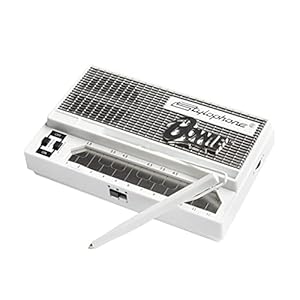The First Billboard: All That Was ‘New, Bright and Interesting on the Boards’

On Nov. 1, 1894, Billboard published its first issue, one that’s vastly different from today’s magazine, as well as Billboard’s expanded platforms. The premiere issue wasn’t even focused on the music industry; Billboard’s eventual trademark concentration on music, and, of course, charts, would develop over decades.
THE FIRST ISSUE
Before it became a weekly publication, and a 24/7 presence online, Billboard launched as Billboard Advertising. Its original mission? One that helps explain its name: “A monthly résumé of all that is new, bright and interesting on the boards.”
Upon its premiere, the eight-page magazine (priced at 10 cents an issue, or, 99 cents per year), was “devoted to the interests of advertisers, poster printers, bill posters, advertising agents & secretaries of fairs.”
The magazine’s first cover subject was R.C. Campbell, then-president of the Associated Bill Posters’ Association. “No more fitting tribute can be paid to Mr. Campbell than to state that he is a man of infinite resource, progressive ideas and tireless industry,” Billboard noted in the inaugural issue.
“In selecting his photograph for the first number of this magazine, the Editor was actuated by the fact that he is the acknowledged leader, the first and foremost and most eminent man in the field which we aim to cover.”
THE CHARTS
As 129 years have passed (and Campbell has ceded the cover to, most recently, Japan’s XG), Billboard’s mission to report on and analyze the entertainment business remains on point, although with, for the past seven-plus decades, a more specific focus on the music segment of the industry.
The magazine’s first national music chart, the 10-position “National List of Best Selling Retail Records,” appeared in the July 27, 1940, issue. Previously, Billboard had highlighted the national “Sheet Music Best Sellers,” “Records Most Popular on Music Machines” (compiled from national reports from phonograph operators), and “Songs With the Most Radio Plugs” on a handful of New York radio stations. The “National List of Best Selling Retail Records,” however, was the first to poll retailers nationwide on record sales.
Tommy Dorsey crowned the first retail list with “I’ll Never Smile Again.” The eventual standard, featuring vocals by Frank Sinatra, would total 12 weeks at the summit. The scorecard paved the way for the industry-standard Billboard 200 albums chart (which became a weekly chart on March 24, 1956) and Billboard’s present-day menu of Luminate data-based format-centric song and album rankings and more. The Billboard Hot 100 songs chart premiered Aug. 4, 1958, with Ricky Nelson’s “Poor Little Fool” the first of the tally’s 1,158 No. 1s and counting – right through Taylor Swift’s current reign with her four-year-old “Cruel Summer,” reflecting that, 129 years on, seemingly unexpected feats can still be achieved in any week.
In more recent years, Billboard’s charts offerings have expanded to include surveys covering social and streaming activity, with streams added to the Hot 100’s weekly tabulation. Billboard has also launched the weekly Billboard Artist 100, expanded touring tallies, weekly surveys ranking songwriters and producers, the Billboard Global 200 and Billboard Global Excl. U.S. lists, the recently-unveiled TikTok Billboard Top 50 and more.
‘LET ITS GROWTH BE NATURAL’
Meanwhile, Billboard has grown to encompass multiple platforms, including the top-rated Billboard Music Awards, Women in Music, industry conferences, podcasts and chart-based Billboard countdowns and channels on SiriusXM, in addition to the weekly magazine and more.
“Although only in its swaddling clothes, [our] success is already absolutely assured,” Billboard proclaimed on page four of the maiden issue. “The publishers aim to have it always newsy and to maintain a high and exacting standard of excellence in all articles appertaining to the interest of its readers.”
As a “What They Think of Us” feature reflected, “Responses to the very modest prospectus demonstrated that beyond all doubt or peradventure … surely a journalistic youngster was never started under such auspicious circumstances.”
“Start the new paper in a small and inexpensive manner, and let its growth be natural. Do not force it. You will not need to. There is a field for it,” advised Col. Burr Robbins.
Added Al. Bryan of Cleveland, “It should have been started long ago.”
Link to the source article – https://www.billboard.com/pro/first-billboard-issue-november-1-1894/
Recommended for you
-
gtpartes Cable Harness Snake Loom Fit for Alesis Drum Module Surge Dm7X Turbo Command RCA Connector Type Electronic Drum Accessories
$26,99 Buy From Amazon -
Donner Soprano Ukulele for Beginners 21 Inch Ukelele Starter Bundle Kit with Free Online Lessons Bag Strap String Tuner Picks Cloth Ukalalee Yukalalee (Blue)
$39,99 Buy From Amazon -
MAONO Podcast Equipment Bundle Audio mixer All-in-One Podcast Production Studio with 3.5mm Microphone for Live Streaming, Podcast Recording, PC, Smartphone, DJ MaonoCaster Lite (AU-AM200-S1)
$119,99 Buy From Amazon -
XSONIC Airstep Spk Edition Spark 2&40&Mini&Go&Live&EDGE Foot Controller with 5 Footswitches, 4 Control Modes, 300H Playtime, Hands-free control of Spark for Home and Gig
$76,49 Buy From Amazon -
MAZAHEI Electronic Drum Set, Portable Tabletop Electric Drum Kit with Build-in Stereo Speaker, 9 Silicon Drum Pads Drum Pedal Drum Sticks, Ideal Kids Drum Toy Gift for Birthday Halloween Christmas
$87,99 Buy From Amazon -
Vangoa 3L3R 6 Pieces Semi-closed Guitar String Tuning Pegs Tuner Machine Heads Knobs Tuning Keys for Acoustic or Electric Guitar, Chrome(Type B)
$13,95 Buy From Amazon -
Bowie Stylophone – Limited Edition Synthesizer
$39,95 Buy From Amazon -
CME U6MIDI Pro – MIDI Interface with Router, Mapper, and Filter – Plug-and-play USB MIDI for computers – Standalone 3-in-3-out MIDI for Merge, Split, Thru
$49,99 Buy From Amazon













Responses